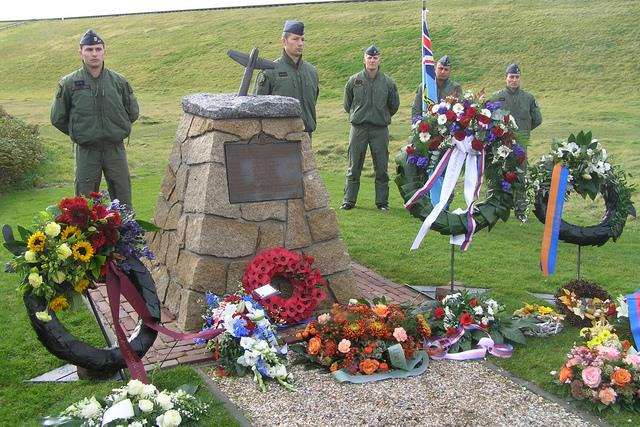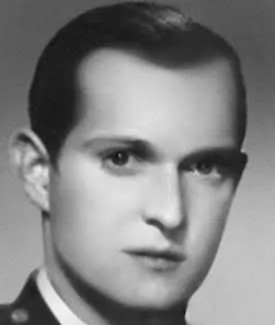

Josef was born on 5th October 1912, in Velke Hamry, a small town in northern Czechoslovakia. After leaving technical college in Prague, he enrolled for two years at the Military Aviation Academy, where he graduated as an observer with the rank of Lieutenant. He was posted to 10 Sqn, 3rd Flight Regiment stationed at Milan Rastislav Stefanik airbase in Nitra, Slovakia.
However, when the Germans occupied Czechoslovakia, he, along with many of his comrades, decided to leave the country of their birth and fight “with a gun in his hand”. Arriving in Poland, he was initially interned in Ligota Kameralna and then in Krakow at the end of May 1939. But the Poles refused to recognise his previous military experience; so in July, he joined the French Foreign Legion and was, therefore, committed for at least five years which, at the time, was the minimum length of service in the Legion.
With the outbreak of the war in September 1939, however, this obligation was rescinded. Josef briefly served with the French air force in Tours, until the capitulation of France, when he was evacuated to Casablanca. From there, on 28th June 1940, he sailed to Gibraltar on the SS Gibt-el-Dersa and thence in a convoy onboard the SS Cidonia, arriving in England on 16th July 1940.
Josef was accepted by the RAF on 16th August and, as a Pilot Officer, was posted to RAF Bassingbourn in Cambridgeshire for navigator training. On 6th September and having completed the training, he was transferred to 311 (Czechoslovak) Sqn, where he initially joined the crew of Ft Lt Breiceitl and subsequently, Sgt Adolf Musalek, flying Wellington bombers.
Gp Capt Percy Pickard is the subject of another of my Stories for the For Evermore project and, coincidentally, he was CO of 311 Sqn at this time, bringing foreign pilots up to operational standard. It is therefore very likely that Josef and his colleagues were some of Gp Capt Pickard’s “students”. During my research, I have also discovered photos of other members of Joseph’s crew taken at RAF East Wretham where Percy was based.
Throughout 1941, Josef flew 35 combat missions, totalling almost 200 hours flying time, and on 28th December, was preparing for what was to be his last mission of the tour before commencing a six-month break from operations. Josef, now a Flying Officer, was also making plans for the New Year’s Eve celebrations with his close friend and wireless operator in the crew, F/O Josef Scerba. Flying a Wellington – codenamed KX-B and commanded by Sgt Alois Siska -- the target for the raid was the German naval shipyard and harbour installations at Wilhelmshaven and despite being hit by flak, their bombs were dropped successfully.
However, 20 minutes into the flight back to base, the left engine burst into flames and soon after, this engine’s propeller tore off, becoming embedded in the fuselage, damaging the hydraulic system and rendering the aircraft unmanageable. With great skill, Sgt Siska managed to land in the North Sea but the rear gunner, Sgt Rudolf Skalicky, was killed – the rest of the crew managed to scramble into the rubber dinghy. Although contact had been made with their base immediately before abandoning the aircraft, no rescue came, and they had to contend with the freezing conditions in the open dinghy.
On the fifth night, 2nd January 1942, the co-pilot, Sgt Josef Tomanek, died shortly after midnight and along with Sgt Skalicky, is commemorated on the RAF Memorial at Runnymede. And just a few hours later, Josef Mohr, totally exhausted, also succumbed to the cold. He is buried in Bergen CWGC cemetery in Holland.
Despite extensive research, the significance of the blue glass on top of the headstone is unclear. However, it is often the Jewish custom to place a coin or stone in this manner and the name MOHR would indicate that Josef was of this faith. Also, Czech glass is of a very high standard, and as blue is recognised as the colour of peace, it is presumably considered an eminently suitable method of honouring a casualty.
Sadly, it is very possible that Josef was going to propose to his English girlfriend on New Year's Eve. During his short military career, Josef was awarded the Czech Military Cross (on three occasions); the Gallantry Medal; and the Commemorative Medal of the Army Abroad with France and Great Britain. British awards included the 1939-1945 Star and the Air Crew Europe Star.
The remainder of the crew -- Sgt Siska; radio operator F/O Josef Scerba; and Sgt Jindrich Svoboda, the front gunner -- reached the Dutch coast at 3pm on 3rd January after six days on the open ocean. They were all captured and remained PoWs until the end of the war. It is worth noting that Sgt Siska remained in the military until retirement as a Major General and the 222nd Czech Training Squadron is named SISKOVA in his honour.



